Equipment in the observatory
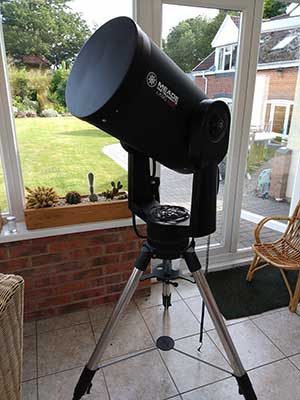
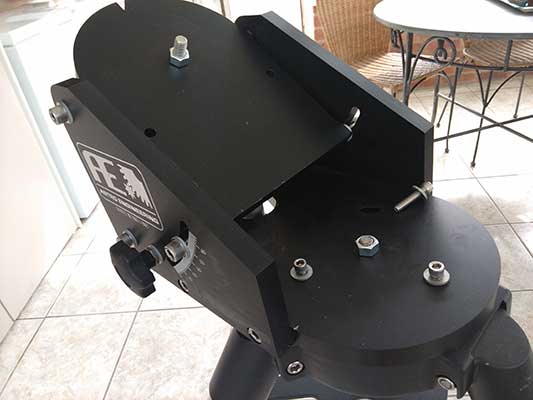
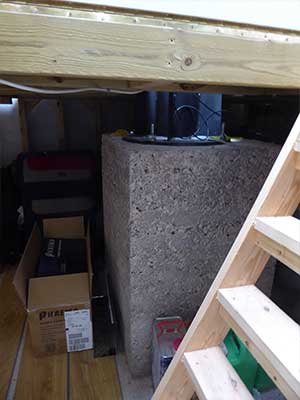
This is the Meade telescope as it came from Radford Road.
I bought a “wedge”. This supports the telescope at an angle so that its axis of rotation is parallel to that of the Earth. This means that when following an object in the sky just one axis of movement is needed.
Because the base of the dome is at ceiling height it is necessary to raise the telescope. There is a large concrete case block on top of which there is a vibration proof pillar.
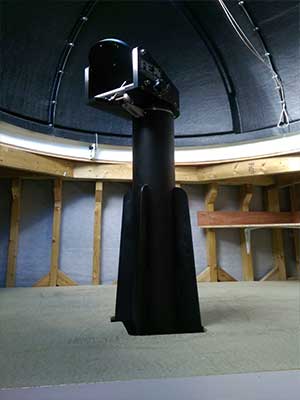
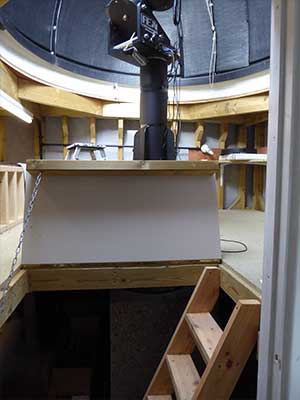
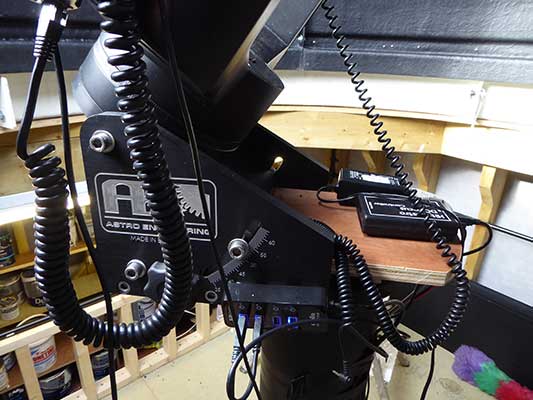
So a floor was built and this shows the pillar protruding through the floor. The wedge is mounted on the pillar.
This shows the concrete, pillar and floor with a trap door and stairs for getting up into the dome.
The telescope is now mounted on the wedge with the electronic controls connected.
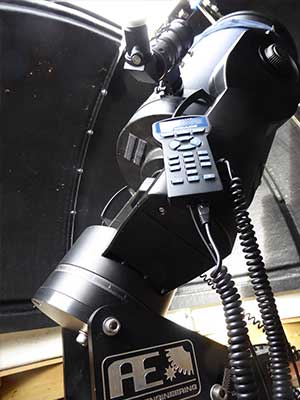
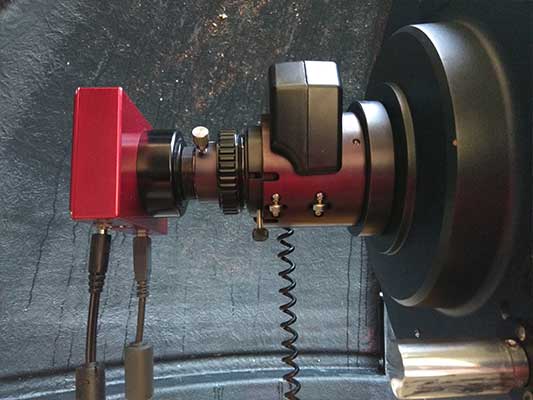
This was a nice set up but was less good for “deep sky” work. The magnification was a bit large. Many deep sky objects have some significant size, e.g. the Andromeda galaxy takes up a lot more of the sky than the moon. So complicated mosaics would be needed for such objects. Also the mount automatically moves to follow objects in the sky but not with total precision. It is possible to “autoguide” the mount (see later) but it would be better to have a more stable mount and a telescope with a significantly shorter focal length.
A complete picture.
The business end with the focuser and Atik Infinity camera.
The Orion Optics ODK 12” is such a beast. It has about 2/3 of the focal length. It is still a compromise but that is what I wanted, something that would be reasonable for deep sky and the moon and planets. I managed to get a good condition ODK second hand. The optics in these instruments are very good. I bought a new mount, a Skywatcher EQ8. This is a more robust “German Equatorial Mount” which enable better balance and more accurate tracking. I also bought a new camera arrangement with a monochrome chip. To get colour, a luminance image is obtained and then using filters red, green and blue images can be put together in photoshop to get a colour image. This takes longer but gives a much better final result.
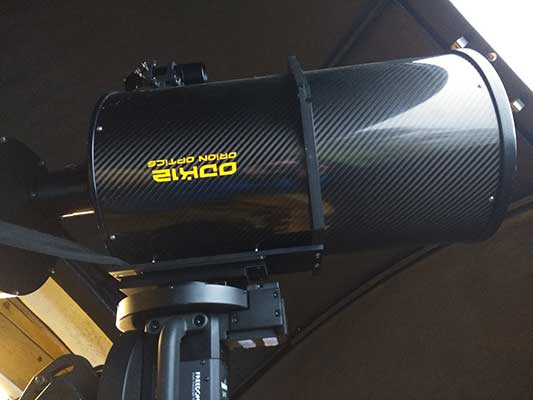
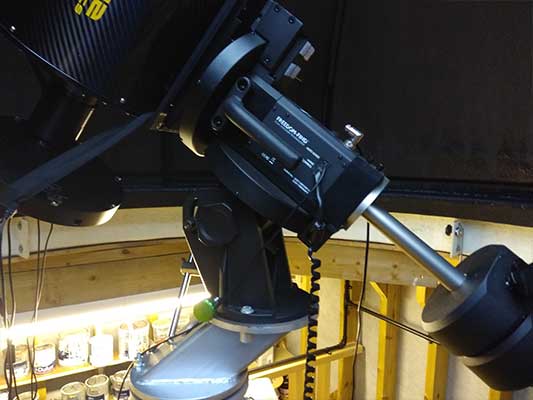
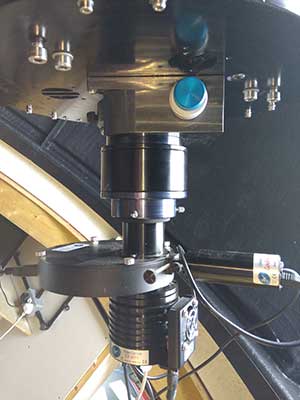
This is the new scope.
The EQ8 Skywatcher mount.
The telescope is pointing vertically here. The business end show the focuser, the filter wheel, the camera – a Starlight Xpress H694 (at the bottom) and a Starlight Xpress Lodestar autoguide camera sticking out sideways.
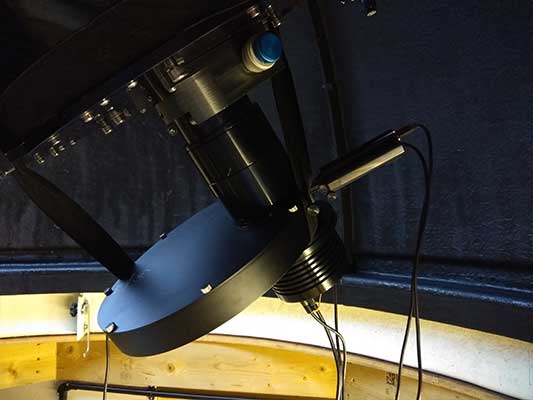
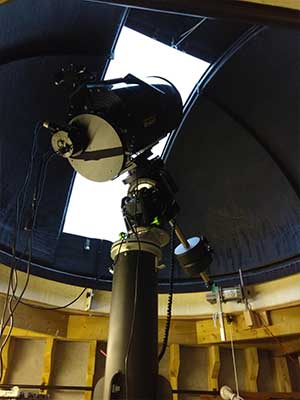
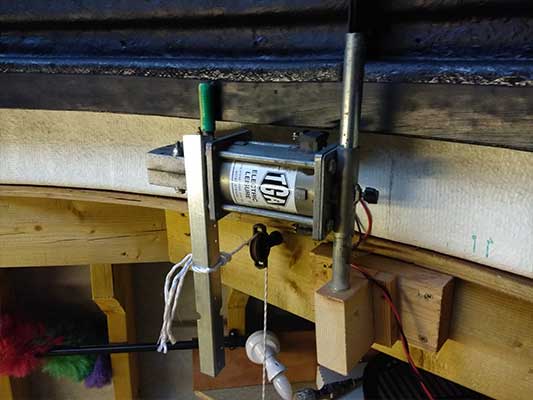
Later an additional Starlight Xpress Trius Pro 35 camera was added as an alternative. This gives a much larger field of view. It larger diameter filters and so a larger filter wheel, but this can be used by all the cameras. The Lodestar autoguider remains.
A picture of the complete set up
This motor was added with Graham’s (next door) help to turn the dome rather than by hand.
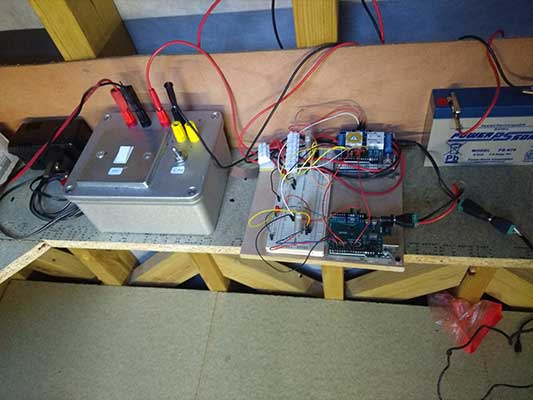
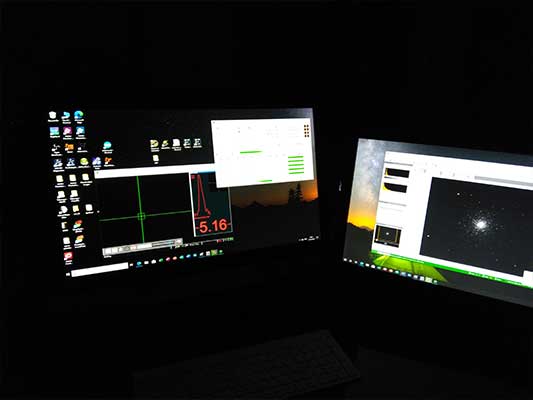
The motor is controlled from my phone using Bluetooth hooked up to an Arduino microprocessor. It helps so that can sight along the tube and adjust the dome while being remote from the motor controller.
This shows the computer control screens from the warm room while photographic a globular cluster. More of this under a separate heading.